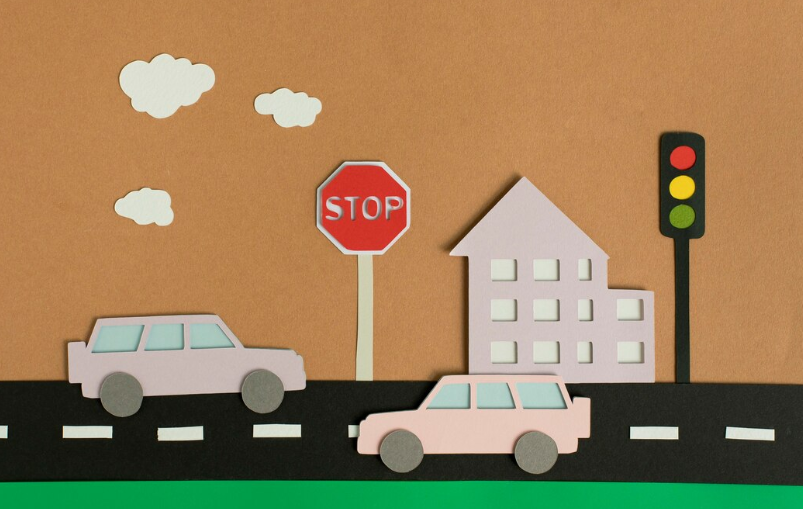
Introduction
Traffic control on public roads is essential to ensure the safety of workers, drivers, and pedestrians. Construction and maintenance activities on public roads pose significant risks if not managed properly. The safety of everyone on the road can be compromised if proper traffic control measures are not implemented. This safety talk will focus on key aspects of traffic control, including the importance of planning, the role of traffic control devices, worker safety, and public awareness.
Importance of Traffic Control Planning
Planning is the first and most critical step in traffic control. Before any road work begins, a detailed traffic management plan (TMP) should be developed. This plan should outline how traffic will be managed, the placement of traffic control devices, and how to handle emergency situations.
A well-prepared TMP will:
– Identify hazards: Recognize potential risks to workers, drivers, and pedestrians.
– Determine traffic flow: Ensure that traffic can move smoothly around the work zone.
– Minimize disruptions: Plan for minimal interference with normal traffic patterns.
– Provide clear guidance: Ensure that all workers know their roles and responsibilities.
Inadequate planning can lead to accidents, confusion, and delays. Therefore, it’s essential that the TMP is thorough, regularly reviewed, and updated as necessary.
Role of Traffic Control Devices
Traffic control devices are critical tools for ensuring safety on public roads. These include signs, signals, barriers, cones, and pavement markings. Each device serves a specific purpose in guiding traffic and protecting workers.
– Signs: Provide advance warning of upcoming work zones, changes in traffic patterns, or other hazards. They must be clearly visible, placed at appropriate distances, and well-maintained.
– Signals: Traffic lights or flaggers can be used to control the flow of vehicles through a work zone. They must be operated by trained personnel who understand the specific requirements of the site.
– Barriers and Cones: Physical barriers, such as concrete or water-filled barriers, can protect workers by creating a buffer between them and moving traffic. Cones are often used to delineate lanes or guide vehicles away from hazardous areas.
– Pavement Markings: Temporary or permanent markings help direct traffic and indicate safe travel paths. These must be clearly visible, especially in low-light conditions.
Correct use of these devices ensures that drivers are aware of the work zone and can navigate safely through or around it.
Worker Safety in Traffic Control Zones
Workers in traffic control zones are at significant risk due to their proximity to moving vehicles. Ensuring their safety requires a combination of training, protective equipment, and situational awareness.
– Training: Workers must be trained in traffic control procedures, the use of equipment, and emergency protocols. They should understand the specific risks of their job and how to mitigate them.
– High-Visibility Clothing: Workers should wear high-visibility clothing, such as reflective vests, especially in low-light conditions or where visibility is compromised. This clothing makes them more visible to drivers and equipment operators.
– Proper Placement: Workers should be positioned in a way that minimizes their exposure to traffic. For example, flaggers should stand in safe areas, away from direct traffic paths, but still visible to drivers.
– Communication: Clear communication is essential. Workers should use radios, hand signals, or other methods to coordinate actions and ensure that everyone is aware of their surroundings.
Public Awareness and Compliance
Drivers and pedestrians play a crucial role in traffic control safety. Without their cooperation, even the best-planned traffic control measures can fail. It’s important to ensure that the public is aware of road work and understands how to navigate through or around work zones.
– Public Notifications: Before work begins, the public should be informed through various channels, such as road signs, social media, or local news outlets. Clear, concise messages should convey the timing, location, and nature of the work.
– Driver Behavior: Drivers should be encouraged to slow down, stay alert, and follow all posted signs and signals in work zones. Enforcement of traffic laws in these areas can deter speeding and reckless driving.
– Pedestrian Safety: Pedestrian routes should be clearly marked and protected. Barriers or fencing may be necessary to prevent pedestrians from entering dangerous areas.
Educating the public about the importance of following traffic control measures can significantly reduce the likelihood of accidents.
Emergency Preparedness
Despite the best planning and precautions, emergencies can still occur. A quick and effective response is crucial in minimizing harm.
– Emergency Procedures: The TMP should include procedures for dealing with emergencies, such as vehicle accidents, worker injuries, or equipment failures. Workers should be trained to respond appropriately and know how to contact emergency services.
– First Aid: First aid supplies should be readily available on-site, and workers should know how to use them. Designated first aid responders should be present, and everyone should be aware of their location.
– Evacuation Routes: In the event of a serious incident, there should be clear evacuation routes for both workers and the public. These routes should be part of the TMP and regularly reviewed.
Conclusion
Traffic control on public roads is essential to protecting workers, drivers, and pedestrians. Proper planning, the use of traffic control devices, worker safety measures, public awareness, and emergency preparedness are all critical components of effective traffic control. By following these guidelines, we can reduce the risk of accidents and ensure that road work is completed safely and efficiently.
Remember, safety is everyone’s responsibility. Whether you are a worker, a driver, or a pedestrian, your actions can make a difference. Stay alert, follow the rules, and always prioritize safety in traffic control zones.
“Start Your Website Journey Today – Exclusive Hostinger Discounts!”




